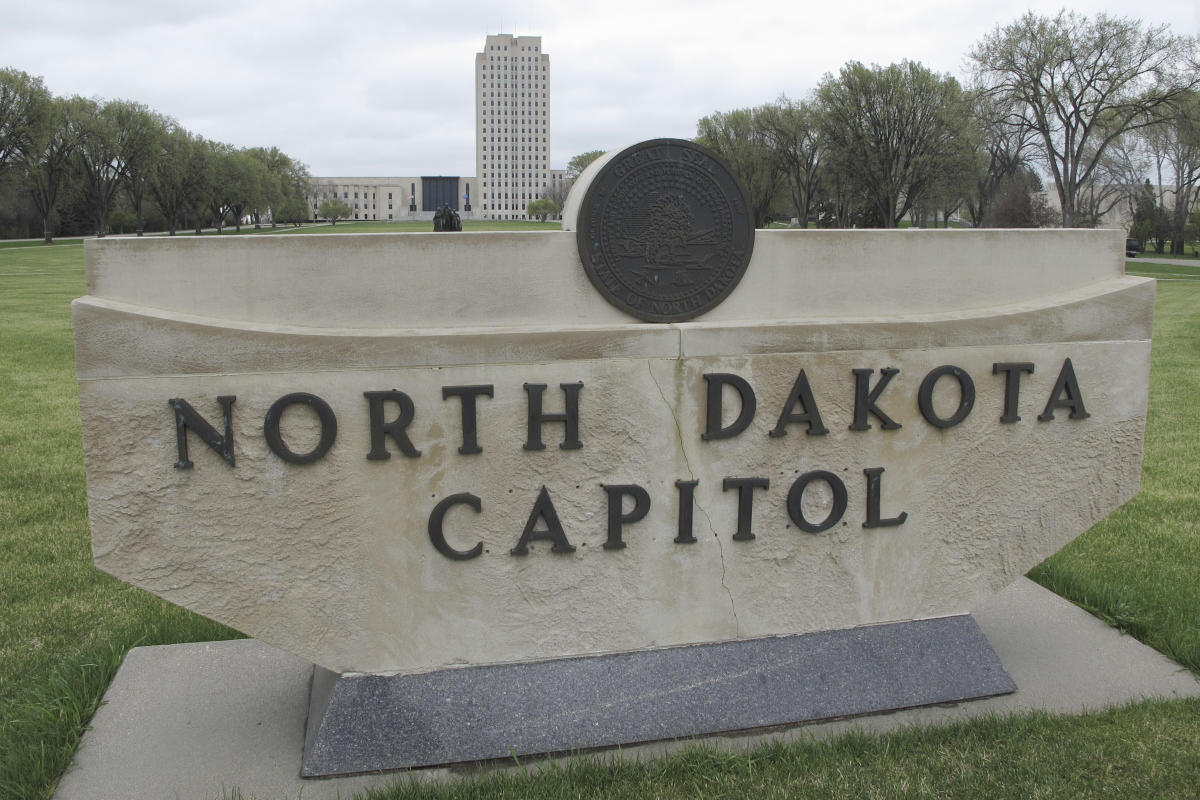WASHINGTON (AP) — North Dakota will hold its Republican presidential caucuses on Monday, the last chance for Donald Trump’s rivals for the GOP nomination to slow his momentum heading into Super Tuesday, the biggest day of the primary campaign, when 15 states hold contests.
Trump’s main opponent in North Dakota once again will be Nikki Haley, who has yet to score a victory in her bid to take on Democratic President Joe Biden in the November general election.
Trump has won every primary and caucus this year in which he appeared on the ballot, and the former president has the backing of the state’s political establishment. North Dakota Gov. Doug Burgum ended his own White House campaign in December and endorsed Trump the day before the Iowa caucuses in January.
North Dakota’s caucuses function more like a party-run primary than the old Iowa-style of caucuses where voters move around the room to form groups. In North Dakota, people may show up at any time during caucus hours, cast a secret ballot and leave once they have voted.
North Dakota had held state-run presidential primaries as far back as 1912, when U.S. Sen. Robert La Follette of Wisconsin defeated former President Theodore Roosevelt and President William Howard Taft. But the state hasn’t had a traditional presidential primary since the 1996 campaign. After that election, the legislature eliminated the presidential primary, and both parties have held party-run presidential caucuses ever since.
A look at what to expect on election night:
CAUCUS DAY
The caucuses will be open from 6:00 p.m. to 9:00 p.m. EST, which is 5:00 p.m. to 8:00 p.m. CST and 4:00 p.m. to 7:00 p.m. MST. Most of the state is in the Central time zone, while eight counties are in the Mountain time zone. Three counties are in both.
WHAT’S ON THE BALLOT
The candidates on the ballot are Trump, Haley and Florida businessman David Stuckenberg. Texas businessman and pastor Ryan Binkley also qualified for the ballot, but he ended his campaign this past Tuesday, and the state party’s practice thus far has been to remove candidates from the ballot once they drop out.
WHO GETS TO VOTE
Caucus participants must be members of the North Dakota Republican Party, which requires a dues payment of at least $50, or they must sign a statement indicating an intent to affiliate with the party.
DELEGATE ALLOCATION RULES
All 29 of North Dakota’s Republican delegates will be awarded to the candidate who receives 60% or more of the statewide caucus vote. If no candidate receives 60% of the vote, the delegates are awarded to candidates proportionally according to the statewide vote. Candidates must receive at least 20% of the vote to qualify for any delegates.
DECISION NOTES
North Dakota’s vote history and political demographics make it likely that Trump will extend his string of victories heading into Super Tuesday, which is the next day.
In previous contests this year, Haley has performed best among voters who live in areas that vote for Democrats in general elections. In North Dakota, those pickings are slim. Biden carried only two small counties in the 2020 general election. Her best chance is to win big in vote-rich Cass County, home of Fargo, the most populous city in the state. Trump narrowly carried Cass with just shy of 50% of the vote, compared with almost 47% for Biden.
There are 12 voting centers in the state, including in the population centers of Fargo, Bismarck, Grand Forks and Minot. Dickinson has the only voting center in the portion of the state in the Mountain time zone. Voters are not assigned to a specific location and may cast their ballots at any location they choose.
The Associated Press does not make projections and will declare a winner only when it’s determined there is no scenario that would allow the trailing candidates to close the gap. If a race has not been called, the AP will continue to cover any newsworthy developments, such as candidate concessions or declarations of victory. In doing so, the AP will make clear that it has not yet declared a winner and explain why.
WHAT DO TURNOUT AND ADVANCE VOTE LOOK LIKE
The state party says it has prepared 30,000 ballots for the caucuses. North Dakota Republicans last held contested presidential caucuses in 2012, when about 11,300 ballots were cast. The 2008 caucuses had just shy of 9,600 votes cast. In 2016, the party held direct election of delegates at the state convention; no presidential preference vote was held. Early and absentee voting is not permitted at the caucuses.
HOW LONG DOES VOTE-COUNTING USUALLY TAKE?
The state party has requested the 12 caucus sites to transmit their results by 9:30 p.m. EST and no later than 10:30 p.m. EST. The AP expects the first votes by about 9:15 p.m. EST and a final update is possible shortly after 10:30 p.m. EST.
ARE WE THERE YET?
As of Monday, there will be 133 days until the Republican National Convention in Milwaukee, 246 days until the November general election.

Amanda Smith is a dedicated U.S. correspondent with a passion for uncovering the stories that shape the nation. With a background in political science, she provides in-depth analysis and insightful commentary on domestic affairs, ensuring readers are well-informed about the latest developments across the United States.








